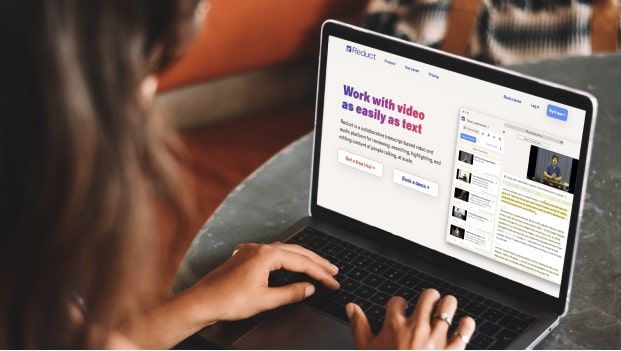Seeing is Believing: Making the Case With Video
March 2024
·
4 min read

On March 16, 2024, the Rise, Resist, Represent conference offered presentations and talks over a dozen topic areas to the wide variety of professions and practice areas in public defense across the United States. The event featured skills training sessions and opportunities to explore innovations, systemic litigation and development research projects. Additionally, participants had the chance to network with thousands of colleagues who advocate for the right to counsel and strive to uphold the dignity and opportunities of their clients.
Our co-founder, Prabhas, facilitated a talk about how Public Defense teams, attorneys, investigators, and paralegals can maximize the use of audio and video evidence using Reduct. Addressing the challenges faced by attorneys and public defenders, he shared how our customers have been dealing with similar issues without necessarily hiring other experts.
Watch the entire recording with transcript here
Highlights from the presentation 🌟
Biggest problems Public Defenders face with video
In any case, you're dealing with a large volume of video and audio evidence. Even minor cases can yield 30 to 40 hours of footage, ranging from body-worn cameras, police interrogations, jail calls, 911 call recordings to surveillance videos. If you take the time to review the footage, in almost every case, you're going to find something in the body-worn camera video that's going to be useful for your defense. There is gold in all of that footage, but there are common challenges:
- There's usually a lot of footage to deal with.
- There are gaps in audio where officers mute their mic.
- There are a large number of repeat videos from officers of different angles.
How Public Defense Teams use Reduct to tackle these problems with video
1. The power of searchable transcription
Managing a large volume of video evidence recorded 24/7 can be overwhelming. This sheer volume often leads to not tapping into the video space altogether.
With Reduct, you can create an online searchable repository of all your raw footage. Typically, you would batch upload all your videos and audio to Reduct. Within 15 minutes, you'll receive an accurate AI transcript, depending on the original footage quality. In Reduct, every word in the transcript syncs to the video, so clicking on a word takes you to that specific moment in the video.
The interactive transcript can be a valuable tool for Public Defense Teams. Instead of reviewing the entire footage, they can efficiently scan the transcript or search for specific phrases to locate the necessary evidence.
In Colorado, the Public Defender's Office, with dozens of offices and over 1,000 staff, deals with hundreds of hours of video daily. They transcribe this footage using AI, making it searchable and correctable. While AI handles most transcription, they also use human transcription for critical videos or poor-quality footage. Transcripts are shared with experts and witnesses to ensure accuracy and are often used in motions to suppress.
2. Video exhibits made easy
Managing and working with video evidence is challenging for both large state offices and small firms. The traditional approach to editing video makes it difficult to handle video regardless of the scale of your organization.
Further, small firms struggle with limited resources, while larger organizations might find it hard to coordinate among many team members.
With Reduct, AI makes transcription accessible at any scale, whether it's a two-person firm or an entire state. Reduct utilizes this transcription to help you search for relevant footage, clip or cut evidence, and edit videos within your browser, even without prior video editing experience.
If you handle juvenile footage or PII that needs to be kept private, you can easily redact any segment of your video or audio all with the transcript. Select the transcription, hit redact, and it's done.
The Angles Law Firm, a two-person firm consisting of one attorney and one paralegal, deals with similar issues on a smaller scale. They use AI transcription to create transcripts from their video evidence and share these transcripts with experts. This allows experts to have a deep understanding of the video content ahead of time. They also collaborate with clients and witnesses to ensure transcript accuracy. The firm frequently uses video and transcripts in motions to suppress, copying and pasting transcript sections directly into their motions, which saves time and effort.
3. Investigations in another language
When evidence is in a different language, it complicates the review process. Non-native speakers can have a hard time dealing with the video, which can be inaccurate or misleading, risking the integrity of the case.
Reduct allows you to upload videos in 90+ languages and get them transcribed and translated to a language you are comfortable working with. You can switch between languages and even view transcripts side-by-side. This makes it easy to work even on cases with bilingual witnesses and testimonials.
A public defender in Aurora used Reduct for a body-worn camera video where a witness spoke Spanish. He transcribed and translated the footage, and then verified the translation with a colleague. This accurate translation helped clear his client of false charges.
Try Reduct with a complimentary case trial
"AI makes transcription accessible at any scale, whether it's a two-person firm or an entire state. And in turn, transcription makes a video review accessible to anybody." - Prabhas
All public defenders or private defense lawyers are invited to try Reduct for free on a case (regardless of duration) with no commitments. Reduct offers both seat-based subscription pricing for private defense lawyers and utilization based agreements with enterprise terms for larger firms and state departments like the Colorado State Public Defender, who have more than thousand staff on the platform.
Interested parties can reach out to sales@reduct.video for more information.


